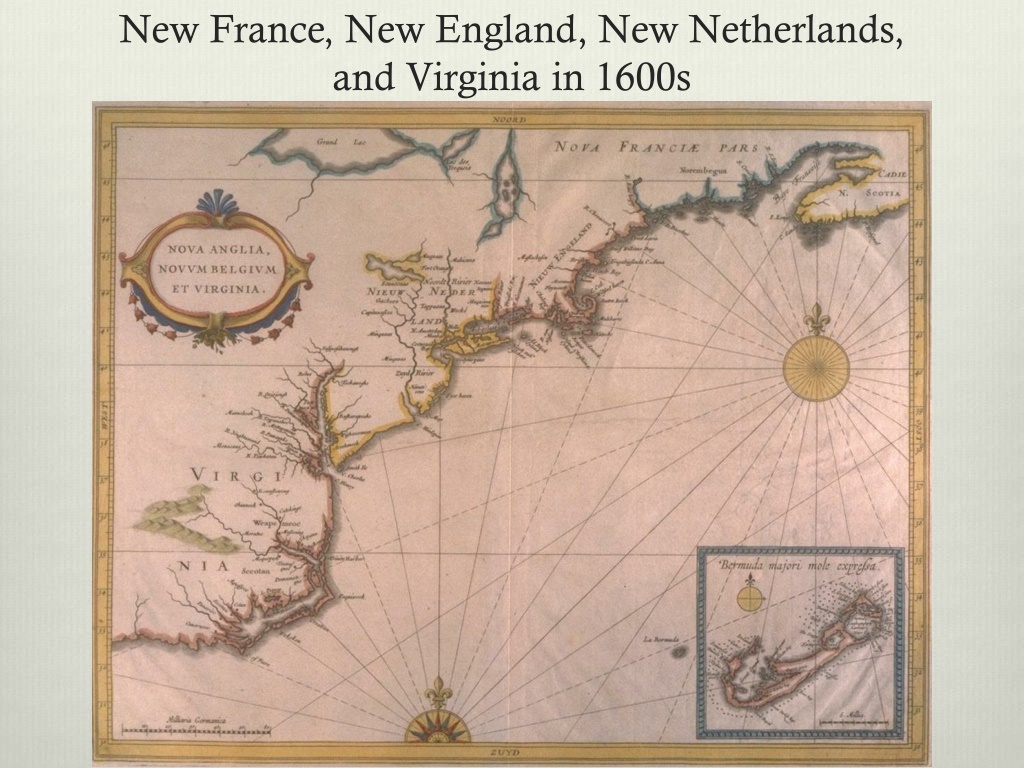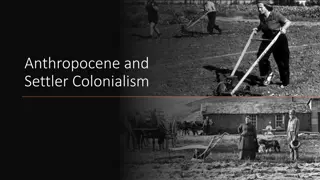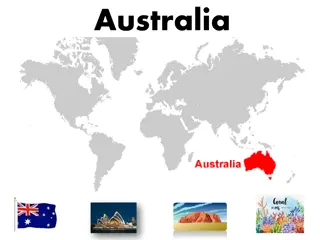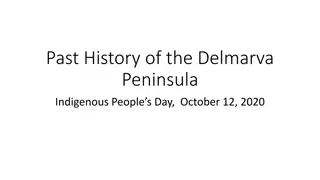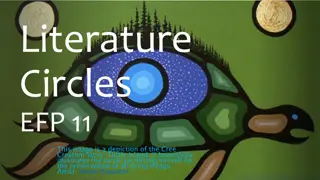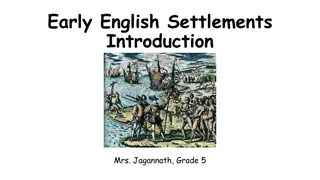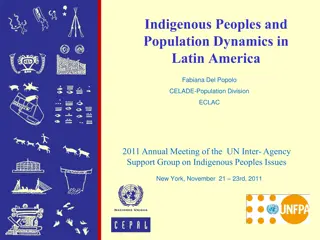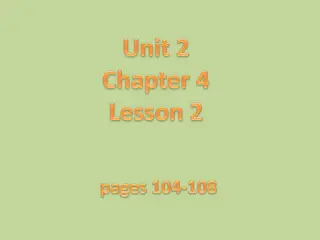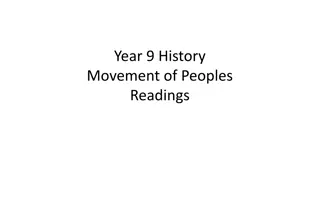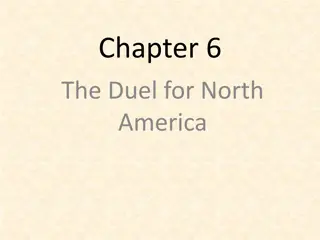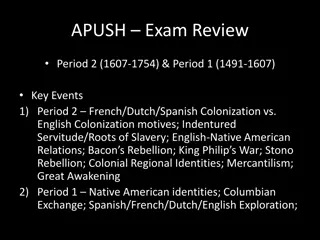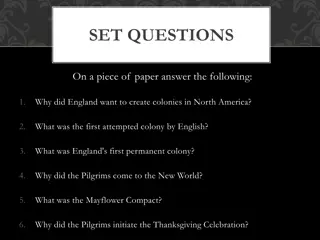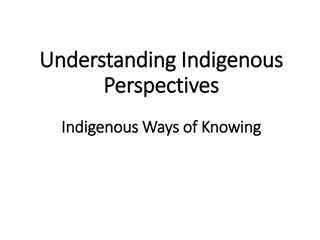Colonization and Indigenous Perspectives in 1600s North America
Explore the colonization efforts in 1600s North America by New France, New England, New Netherlands, and Virginia, along with English settlers' perspectives on Native Americans. Discover the contrasting views on land use, settlement practices, and interactions with indigenous populations through historical quotations and images.
Download Presentation

Please find below an Image/Link to download the presentation.
The content on the website is provided AS IS for your information and personal use only. It may not be sold, licensed, or shared on other websites without obtaining consent from the author. Download presentation by click this link. If you encounter any issues during the download, it is possible that the publisher has removed the file from their server.
E N D
Presentation Transcript
New France, New England, New Netherlands, and Virginia in 1600s
Crop Trio of Central & North America
English Settler Quotations on Indians in New England The Indians are not able to make use of one fourth part of the Land, neither have they any settled places, as Townes to dwell in... [T]hey change habitation from place to place. --Francis Higginson (1630) Much might they [the Indians] benefit themselves...if they were not...fettered in the chains of idleness. --William Wood (1634) [The Indians are] not industrious, neither [do they] have art, science, or faculty to use either the land or the commodities of it; but all spoils, rots, and is marred for want of manuring, [...and] ordering. --Robert Cushman (1628) Their wives are their slaves and do all the work; the men do nothing but kill beasts --Christopher Levett (1628) As for the Natives in New England, they [have] no settled habitation, nor any tame Cattle to improve the land by, and soe have noe other but a Natural Right to those Countries. --John Winthrop In a vacant soyle, hee that taketh possession of it and bestwoeth culture and husbandry upon it, his Right it is. --John Cotton
Our fathers had plenty of deer and skins, our plains were full of deer, as also our woods, and of turkies, and our coves full of fish and fowl. But these English have gotten our land, with scythes they cut down the grass, and with axes fell the trees; their cows and horses eat the grass, and their hogs spoil our clam banks, and we shall be starved. . . . We must be one as they are; otherwise we shall be all gone shortly. . . All Indians [must] kill [their] men, women, and children, but no cows, [for the cows will be needed until] our deer be increased again. Miantonomo
Mid-18th-century wampum belt symbolizing Five Nations: Seneca, Cayuga, Onondaga, Oneida, Mohawk
